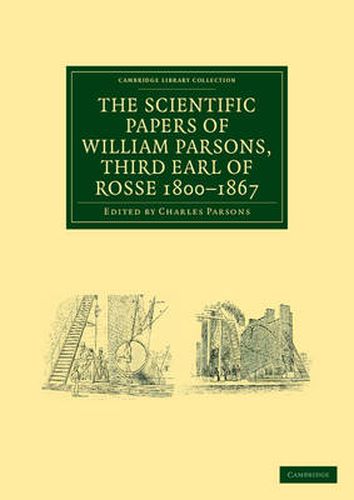Readings Newsletter
Become a Readings Member to make your shopping experience even easier.
Sign in or sign up for free!
You’re not far away from qualifying for FREE standard shipping within Australia
You’ve qualified for FREE standard shipping within Australia
The cart is loading…






William Parsons (1800-67), third Earl of Rosse, was responsible for building in 1845 the largest telescope of his time, nicknamed the ‘Leviathan’. It enabled the Earl to make unprecedented astronomical discoveries, including the discovery of the spiral nature of galaxies. Rosse (then Lord Oxmantown) began publishing scientific papers on telescopes in 1828, and for the rest of his life made regular contributions to scientific journals in Ireland, England and Scotland. He served as President of the British Association for the Advancement of Science in 1843, and of the Royal Society from 1848 to 1854, and his addresses to those societies are also included in this collection. Edited by his younger son, the engineer Sir Charles Parsons (1854-1931) and published in 1926, these papers show the wide range of the Earl’s interests, from astronomy and telescopes to ancient bronze artefacts and the use of iron in shipbuilding.
$9.00 standard shipping within Australia
FREE standard shipping within Australia for orders over $100.00
Express & International shipping calculated at checkout
William Parsons (1800-67), third Earl of Rosse, was responsible for building in 1845 the largest telescope of his time, nicknamed the ‘Leviathan’. It enabled the Earl to make unprecedented astronomical discoveries, including the discovery of the spiral nature of galaxies. Rosse (then Lord Oxmantown) began publishing scientific papers on telescopes in 1828, and for the rest of his life made regular contributions to scientific journals in Ireland, England and Scotland. He served as President of the British Association for the Advancement of Science in 1843, and of the Royal Society from 1848 to 1854, and his addresses to those societies are also included in this collection. Edited by his younger son, the engineer Sir Charles Parsons (1854-1931) and published in 1926, these papers show the wide range of the Earl’s interests, from astronomy and telescopes to ancient bronze artefacts and the use of iron in shipbuilding.